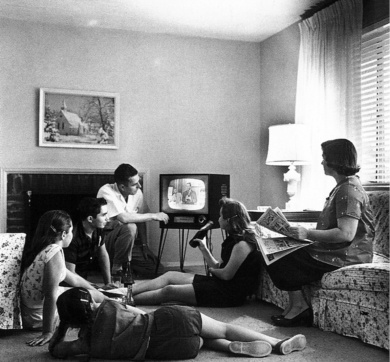Television is a crucial part of people’s lives since the 1930s when it was first introduced to the public. Not only was it a significant part for the people in USA in 1969, when the first moon landing was aired and shown entirely for everyone who owns a TV. Furthermore, it became a public entertainment when it started to air movies and films for audience to enjoy globally. In many ways have technology changes the appearance of television, but the aim of it is still the same as it was before, to provide entertainment.
Television (TV) has certainly changed since the day it was introduced. People used to enjoy TV in the same space as their friends and family, especially during primetime. For decades, it was a trend and has become part of a culture. Today, TV is no longer shared as how it was before. Not only have people begun to move towards privatizing their own space, it has become a social norm to have their own TV.
Media has also taken a toll on TV to enhance the viewer’s experience by providing them services to not only watch the program but engage in social activities at the same time. Families might be in the same room watching the same program but each one is in their own personal space with their gadgets. Audience no longer converse hence they become fragmented in many places causing them to be in their own private space even when others are around.
The behavior in audience has change as well during the evolution of TV. During the early days, TV was the center of attention and many gave full attention when the show starts airing. Weekends and meal time was a date for audience to sit and watch. Today, given the benefit of multiple choice of entertainment and advance of technology, audiences overlook the point of TV. They slowly drown in their own private zone when around.
The traditional TV is slowly fading away as well as its cause. Are people today watching TV to enjoy the program aired, or leave it on as a second choice of entertainment while they engage in their daily activities? As time slowly passes, TV will certainly change, but will it survive the future generation?
References:
- Sunil R Nair. 2011. Trak.In. [ONLINE] Available at: http://trak.in/tags/business/2011/02/01/television-viewing-audience/. [Accessed 08 September 13].
- AXN Asia. 2013. AXN Asia. [ONLINE] Available at: http://www.axn-asia.com/programs/hannibal/get-app. [Accessed 08 September 13].
- Michelle M.Falck. 2008. Television In Our Lives: Then and Now. [ONLINE] Available at:http://ww2.odu.edu/ao/instadv/quest/Television.html. [Accessed 08 September 13].
